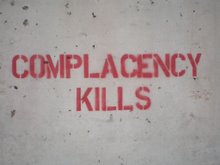WASHINGTON (Reuters) - The U.S. military has carried out 340 air strikes in Afghanistan over the past three months, more than double the 160 conducted in Iraq, as fighting with Taliban insurgents intensifies, the Washington Post reported on Sunday.
U.S. steps up Afghan air strikes -report - Yahoo! News
The difference in the number of air strikes in Afghanistan compared to Iraq is not really a matter of increased violence, comaparatively speaking, but in the areas the fighting occurs, the density of population and the operations underway.
In Iraq, the use of air strikes can be a considerable hinderance in fighting an insurgency unless there is a very specific target package with a very large number of enemy combatants (like the Ramadi Train Station) or a very high value target (like Zarqawi).
Also of note is how the enemy fights and their tactics. In Iraq, the cells are small, the operational units of the enemy are small because large armed forces would be immediately noted, reported and identified by the locals or air over sight we have in the region, not to mention the number of patrols sent out.
In Afghanistan, there are very large areas (such as Helmand Province) where troops have not been nor established physical control. As noted in a previous post on the subject, it's also a matter of economics of force. In Afghanistan, man power is cheaper and more available than large amounts of explosives so the Taliban and like minded enemy forces not only feel more capable of congregating large forces in remote, sparsely populated areas, but also consider larger forces cheaper and more expendable since they have a large base of support in Pakistan.
Finally, there are the reasons for tactics. In Afghanistan, the majority of the people are Sunni Muslims. The Taliban there do not see themselves at war with an entire group or section of the populace. Tribal politics are also more prevalent in Afghanistan, thus making war on a protected group could put the Taliban at war with a very large group of people who would, regardless of other political leanings, be even more likely to commit "kanly" or family blood feud.
The Taliban is very reliant on the population in sparsely populated and resource limited areas (ie, dry, waterless, mountainous, rocky, dangerous, etc, etc, etc) on the good graces of their hosts that are less intermixed in certain areas than in Iraq. So, they limit their attacks on the civilian population and limit the "swimming" they do inside the dense city populations. In short, they understand Mao's concepts of guerilla warfare and are seeking to use them successfully again as they did against the Russians.
In Iraq, it's quite different. The population is both an ally and an enemy to the insurgents. They are not quite as popular as they would like to be and they are not quite as circumspect in their attacks. Fortunately for them, years of socialist despotism and advanced society broke a large number of tribes in Iraq. While they still function and blood fueds can still exist, they do not function as well in the urban settings of Iraq. The rural areas still use it more effectively and there you can see the definitive split in those areas where the insurgency has support and those that don't.
Thus, who, what and why something gets an air strike is quite different in each area and does not necessarily reflect whether one area is more lawless than another.




















No comments:
Post a Comment